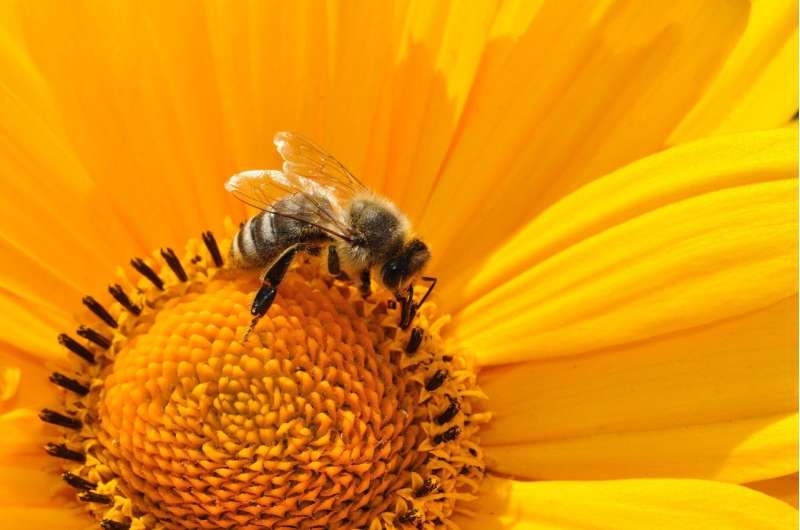Here are the flowers that both bees and humans like best

Lisa Lock
scientific editor

Andrew Zinin
lead editor

Flower strips, seed mixtures, and wild by design. We want to help bees and other vital pollinators, which are in decline all over the world. But which flowers are actually the best?
This question prompted botanists from the Natural History Museum of Denmark at the University of Copenhagen and botanists from the National Botanic Garden of Wales to conduct a scientific study of which flower mixtures attract the most pollinators.
"Much of our knowledge in this area is anecdotal. So, there was a need for a scientific approach, where we systematically test different flowers to be sure how we can best help pollinators, which are extremely important to our ecosystems," says professor and botanist Natasha de Vere from the Natural History Museum of Denmark.
Yarrow, garden cosmos, and cornflower are a treat
The researchers reviewed more than 400 previous research articles on flowers and insects and investigated how much bees and hoverflies like the finished flower mixtures that are currently sold commercially.
Based on the study, the researchers developed two new seed mixtures, which they evaluated both on the number of insects that visited them and on their aesthetic appeal to humans.
"We can see that seed mixtures containing both non-native and native flowering plants establish themselves better in the soil, bloom for longer, and have more visits from pollinators. And they are also most attractive to the human eye," says de Vere.
Top ten flowers to plant
Based on the study, the researchers recommend choosing seed mixtures with these species if you want to attract bees and hoverflies and are also interested in the aesthetic value of the flowers:
- Yarrow (Achillea millefolium)
- Corn chamomile (Anthemis arvensis)
- Cornflower (Centaurea cyanus)
- Purple viper's bugloss (Echium plantagineum)
- Corn marigold (Glebionis segetum)
- Common poppy (Papaver rhoeas)
- Field mustard (Sinapis arvensis)
- Scentless chamomile (Tripleurospermum inodorum)
- Garden cosmos (Cosmos bipinnatus)
- Moroccan toadflax (Linaria maroccana)
- Common phacelia (Phacelia tanacetifolia)
If everyone does a little, we can help the bees
The reason why the researchers have also included the aesthetic dimension of flower mixtures in their study is, of course, that appearance also has a significant impact on what we choose to plant in our gardens and green spaces.
"It has become quite popular to plant strips of flowers in urban areas and in gardens where there may have been only grass lawns before. This is because flowers are good for bees, but also for our mental health," says de Vere.
According to the professor, who has conducted in-depth research into the interaction between plants and pollinators for a number of years, even small areas of flowers are of great importance to our buzzing friends.
Her research shows that gardens and urban areas can be very good for pollinators.
"It is important that everyone does something to help—and even small changes can really make a difference. I myself only have a small backyard, which I have filled with the best plants for pollinators, and it is now full of bees and hoverflies," she says.
"I hope our new research results can be used to provide evidence-based guidance on how to select plant species—whether you are a garden owner, a municipal gardener, or otherwise involved in producing seed mixtures."
Provided by University of Copenhagen


















